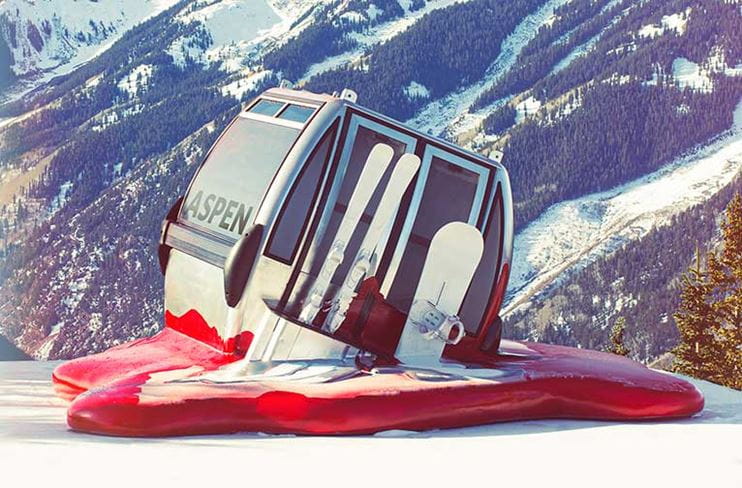Rashid Johnson on Nature, Escapism, and Artwork with Utility
The accomplished New York City-based artist will grace our 2022-23 lift tickets as part of Art in Unexpected Places.

This year, Aspen Snowmass is thrilled to feature the works of world-renowned mixed-medium artist Rashid Johnson for the 18th season of Art in Unexpected Places (also known as ArtUP), a program celebrating and exhibiting exceptional artworks across the resort in unique ways. As is tradition, chosen artists have their work adorned on Aspen Cards, lift tickets, and season passes, as well as showcased through creative outlets including installations on-mountain, in our hotels and restaurants, at special events, and through collaborative merchandising.
Born and raised in Chicago, Johnson studied at both Columbia College Chicago and the School of the Art Institute of Chicago, before spending a large part of his career in New York City. He is known for his photography, sculptures, mosaics and collages, text work, drawing, filmmaking, and more. Considered prolific due to the volume and impact of his multi-disciplinary work—like his film adaptation of Richard Wright’s book “Native Son” on HBO Max or his plant installations exhibited in Moscow’s Garage Musuem of Contemporary Art which transcended tense international politics—his artwork is often a nuanced and subtle commentary on culture, history, identity, and beyond.
Johnson’s work has been exhibited around the world, and he sits on the board of multiple museums, including the Guggenheim. Most recently, the Metropolitan Opera unveiled two of Johnson’s mosaics—made using everything from ceramic and mirror tiles to oyster shells and wax—as part of an exhibition titled “The Chorus,” on display throughout the 21-22 season.
The works decorating the 2022-2023 season’s Aspen Cards will include images of Johnson’s mosaics and collages titled “Broken Men,” “Escape Collage,” and “Broken Crowd,” as well as photography of his towering plant installation titled “The Crisis.” In addition to the works featured on this season’s Aspen Cards, there will be a limited-edition ski featuring Rashid’s work, exclusively available for sale at Aspen Collection.
“I went through an archive of images and chose some that reflected all my work,” said Johnson when discussing how he chose which pieces would be featured. “And I was thinking about escapism and things being out in nature.”






For Johnson, photography of works like “The Crisis” is in many ways no different than the works themselves. “We consume a lot of artwork through images. It’s how we are able to see the work without going to the museum,” he explains. When “The Crisis” was initially installed, the bright yellow shelving units that housed the plants and objects nodded to the alarm associated with immigration policy and concerns. But, as a photograph of the installation, Johnson says, “It takes on whatever crisis is present in the space it lives in.”
Johnson is keen on the idea of his work being tactile and carried around in the pockets of skiers and riders.
“It’s interesting that something you make can become part of a process. Employability. For my art to have a job and a function,” he says. “Thinking about utility has always been part of my process and now this art will open up doors—quite literally through a card being scanned and a person gaining new access.”
Johnson has both personal and professional ties to the Roaring Fork Valley. “I started to come to Aspen about 15 years ago as the guest of the Aspen Art Musuem,” he reflects. “Then I started coming on my own and with family for skiing. I love to ski and I’ve come to really appreciate Aspen as a place that can be quiet and meditative.”
In 2018, Johnson was Aspen Art Museum’s Artcrush honoree, and also lectured at Anderson Ranch. Because of his history in the Aspen art scene, he doesn’t see showcasing his work at Aspen Snowmass this winter season as a huge leap. Instead, he finds the observation of his art in nature and in public spaces—beyond the canvas or a museum—exciting.
“This is the liberation of the work putting it into a new space for cultural discourse, and I am not sure how that is going to look,” he muses. “My hope is that it gives people the space and joy to contemplate. And I hope they walk away injury-free.”
The exhibit of Rashid Johnson's work will run through September, 2023.


